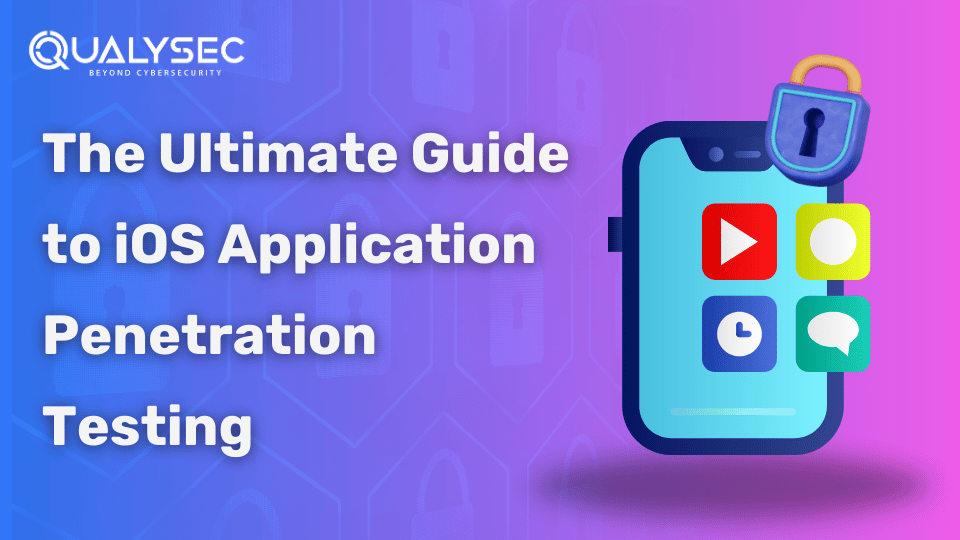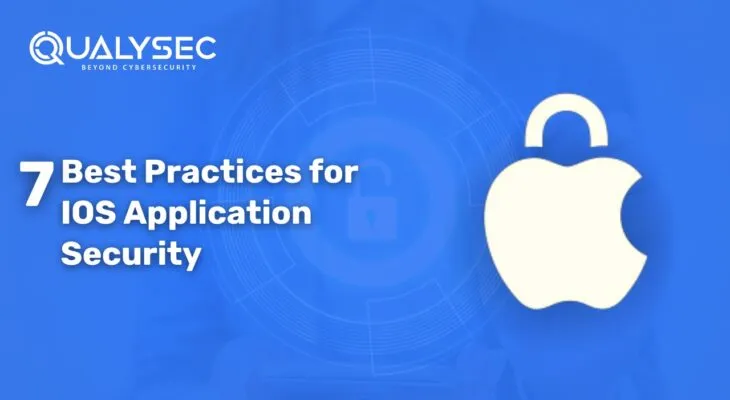The Ultimate Guide to iOS Application Penetration Testing
iOS application penetration testing helps app manufacturers of iOS platforms find security vulnerabilities and enhance their security. iOS is one of the most popular operating systems in the world and has a reputation for being safe for its users. However, with technological advancement and attackers getting more skilled, new vulnerabilities are arising in iOS applications. As per security research, 76 popular iPhone apps (widely used by users) were found vulnerable to data interception attacks. Since these apps are downloaded by millions worldwide, just imagine the scale of data breaches and losses in the event of a successful attack. With that being said, regular penetration testing can help iOS app manufacturers prevent untimely attacks. In this blog, you are going to learn more about iOS application penetration testing, its many benefits, and how it is done. What is iOS Penetration Testing? iOS penetration testing simulates real attacks on iOS apps to check their security and identify vulnerabilities. Attackers exploit these vulnerabilities to get into the app’s architecture either to steal data or manipulate functions. In iOS penetration testing, the testers evaluate the application’s design, code, configurations, and implementation to identify security flaws. Though Apple’s security structure is one of the best, it is still hackable. Regular pen tests can ensure you stay miles ahead of cyber threats that can harm your apps, and eventually your Apple device. Importance of iOS Application Penetration Testing The purpose of iOS app penetration testing is to reveal potential vulnerabilities in iOS applications and address them before attackers get hold of them. The process includes using automated tools and extensive manual penetration testing techniques. Insecure iOS applications are dangerous for developers and users alike since data leaks can potentially harm both. This is especially true for iOS as the increased popularity of Apple devices (iPhones, iPads, Apple Watch, etc.) has lured attackers to breach their security for sensitive information. Benefits of iOS Application Penetration Testing iOS penetration testing helps you find those vulnerabilities that can lead to potential cyberattacks. Along with this, the ios security testing process offers more benefits for the iOS ecosystem, such as: 1. Identify Security Vulnerabilities in iOS Features iOS application penetration testing or iPhone pentesting helps discover security vulnerabilities specific to iOS features, such as Touch ID, Face ID, and secure enclave. By identifying these weaknesses early, developers can promptly address them before they are exploited. 2. Comply with Apple’s Guidelines and Industry standards Penetration testing ensures iOS apps comply with Apple’s strict security guidelines and App Store requirements. Adhering to these guidelines ensures the app is approved and remains in the App Store. This compliance not only creates a smoother review process but also assures users that the app meets the security standards set by Apple. Additionally, many industries have strict security laws for apps that store user data, such as PCI DSS, HIPAA, ISO 27001, etc. Not complying with these requirements can lead to legal problems and fines. Penetration testing helps ensure these compliance needs are met with ease. 3. Build User Trust in the Apple Ecosystem Apple boasts about its high-quality security standards and a cyberattack can break this trust. Users are more likely to download and use apps that they believe are secure, and penetration testing can help them gain this trust. Additionally, by demonstrating that you value user data safety, you can retain more users, maintaining a reputation within the Apple community. 4. Implement iOS-Specific Security Features iOS apps often use platform-specific security features like App Transport Security (ATS) and Keychain services. Penetration testing checks if these features are properly implemented or not. By securing network communication and data storage, iOS application penetration testing prevents unauthorized access and secures users’ sensitive information. 5. Protection Against Specific Threats iOS applications might face specific threats, such as iOS trustjacking, iOS single app mode escape, and XNU arbitrary code execution. Penetration testing uncovers vulnerabilities that can be exploited by these attacking methods. Additionally, developers can secure their apps in a better way from unauthorized modifications and intellectual property theft. 6. Strengthen App Update Processes Penetration testing also identifies vulnerabilities in the app update process. This ensures that app updates do not introduce new security threats. By securing the update process, developers can ensure that new features and patches are safe for the users. As a result, it maintains the app’s security over time, keeping it resilient against emerging threats. 7. Enhance Secure Third-Party Integrations iOS apps often integrate with APIs and third-party services. These integrations sometimes bring new vulnerabilities that can directly affect the app’s performance and expose it to cyberattacks. By thoroughly testing the app, developers can ensure these third-party integrations do not introduce security vulnerabilities. What are the Steps of iOS Pentesting iOS pentesting is a bit more complicated than Android pentesting due to the complex architecture of iOS apps. However, the basic process remains the same. Would you like to see a real iOS penetration testing report? Click the link below and download a sample report that belongs to one of our existing clients! Latest Penetration Testing Report Download Choosing the Best iOS Application Penetration Testing Company When it comes to protecting iOS apps from cyber threats, choosing the right penetration company is key. Here’s what to look for when picking a team that knows about Apple’s security, APP Store rules, and all the tricks attackers might try. 1. Experience and Expertise Look for a testing company with extensive experience and expertise in iOS penetration testing. Check if they have previously tested similar apps in their track record. Experienced testers are more likely to identify potential vulnerabilities effectively. 2. Certifications and Credentials Choose a testing company that has certified pen testers or ethical hackers with relevant credentials. Common certifications include Certified Ethical Hacker (CEH), Offensive Security Certified Professional (OSCP), and Certified Information Systems Security Professional (CISSP). These certificates ensure that the tester is trained and adheres to industry best practices. 3. Comprehensive Testing Methods Since iOS pentesting not only includes testing the


